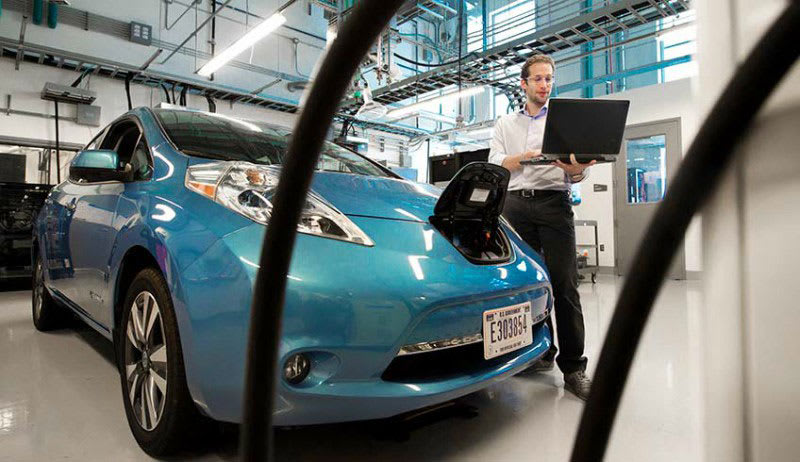Thanks to lower costs and greater access to charging stations, the electric vehicle is finding its way into the neighborhood.
EV adoption experienced a 32% annual growth rate from 2012-16 , and the “plug-in” cars, if levels remain steady, are primed to make up 10% of new automotive sales in 2025.
More EVs, however, means more strain to the electric grid. Drivers of plug-in electric vehicles (PEVs) will frequently charge up at home.
The energy impacts are difficult to know for sure, but not necessarily unpredictable.
Matteo Muratori, Transportation and Energy Systems Engineer at the National Renewable Energy Laboratory, used computer simulation to project the impact of in-home charging on the grid .
Muratori revealed his conclusions in a paper titled “ Impact of Uncoordinated Plug-in Electric Vehicle Charging on Residential Power Demand ,” published in the online journal Nature.

The Findings
To charge vehicles, residential drivers have the option of “Level 1” stations (cheaper, slower, less powerful) and “Level 2” stations (more expensive, faster, more powerful!).
Muratori tested in-home plug-in electric vehicle recharging profiles for 348 vehicles associated with 200 households , assuming both Level 1 (1920 W) and Level 2 (6600 W) residential charging infrastructure.
The profiles, generated by Muratori’s modeling, produced realistic patterns of residential power consumption, validated using metered data. A “personal transportation energy consumption model” measured the impact of driving behavior and charging times, allowing for a more precise estimation of the effects of in-home PEV recharging.
According to the report, a predicted PEV market share of up to 3 percent, or approximately 7.5 million vehicles, will not significantly impact the total residential power demands.
The shape of the aggregate residential power demand, however, is impacted by the introduction of PEVs, especially if Level 2 charging is adopted, says Muratori.
Even if the total PEV market share remains limited, clusters of high PEV adoption can be found in certain areas. Thus, PEV charging effects can be exacerbated at the local level – potentially overwhelming a residential distribution transformer.
“The most surprising result was the importance of consumer choice in terms of residential charging technology,” Muratori told Tech Briefs. “Level 1 or Level 2 charging is shown to make a significant difference when it comes to PEV impact on the grid.”
Neighborhood PEV drivers are more likely to recharge their vehicles upon returning home. Even without large numbers of PEVs on the road, such an uncoordinated clustering effect “will significantly increase the peak demand seen by distribution transformers and might require upgrades to the electricity distribution infrastructure,” according to the report.
The NREL author says plug-in electric vehicles are still at a niche market stage, but research institutions like the Golden, Colorado-based National Renewable Energy Laboratory are actively examining the infrastructure needed to support large-scale adoptions.
"Future research should focus more heavily on understanding consumer driving and charging behavior, to better estimate charging requirements, and the nuances determining the choice of residential PEV charging infrastructure,” Muratori told Tech Briefs.
What do you think? Share your thoughts below. How will PEVs impact the charging infrastructure?

